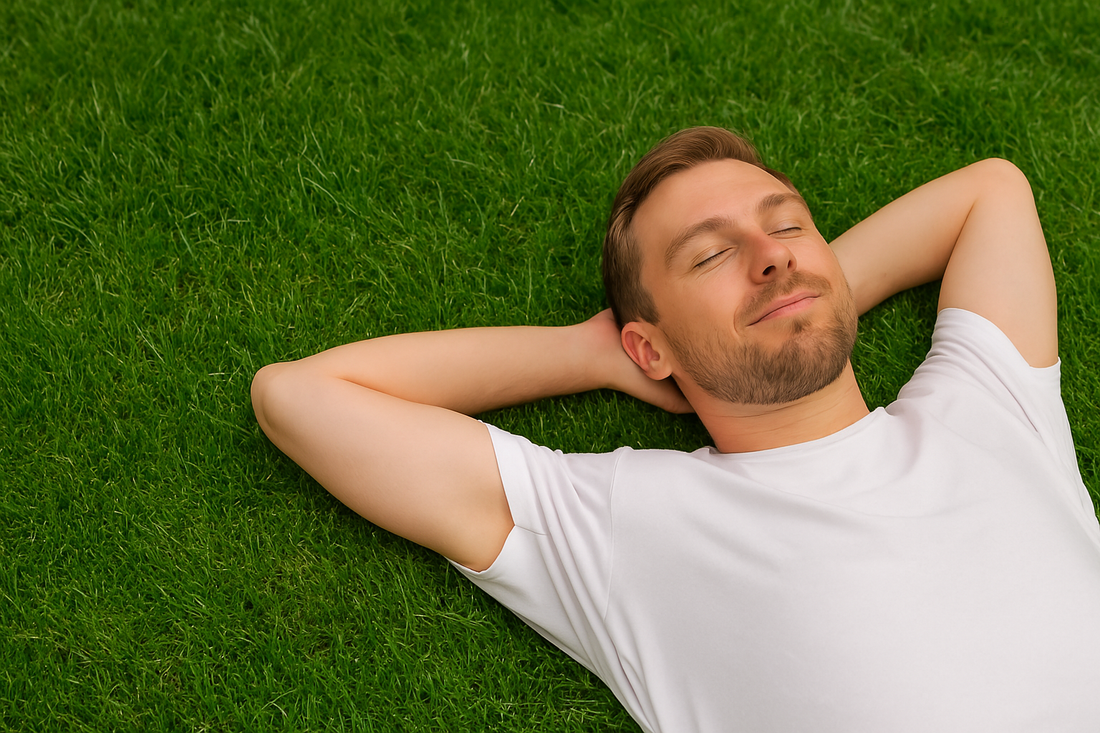Have you ever wondered if simply lying on the ground could improve your health? The answer is yes—provided you’re lying outdoors on natural surfaces or unsealed concrete. This practice, known as grounding or earthing, is gaining popularity for its potential to reduce inflammation, improve sleep, and enhance overall well-being.
But how does it work, and what surfaces actually allow you to ground effectively?
What Is Grounding (Earthing)?
Grounding, or earthing, is the process of physically connecting your body to the Earth’s surface to absorb its natural electric charge. The Earth emits a mild negative charge that helps neutralise free radicals in your body, reducing oxidative stress and inflammation.
People who ground regularly often report:
-
Better sleep
-
Reduced anxiety
-
Less joint pain
-
Improved energy
To dive deeper into the research, visit:
The Science of Grounding: Its Benefits and Techniques
Does Lying on the Ground Really Work?
Yes, but only if you’re on a conductive surface that allows the Earth’s electrons to pass into your body. Otherwise, you’re just relaxing—not grounding.
Best Surfaces for Grounding:
-
Grass
-
Soil
-
Unsealed concrete
-
Sand
Surfaces That Don’t Work:
-
Asphalt
-
Wood
-
Indoor flooring
-
Plastic and rubber
Urban dwellers wondering about city options can read:
Can I Ground on Pavement?
Can I Ground on Concrete?
The Science Behind Grounding
Multiple studies suggest grounding may help:
-
Lower cortisol levels
-
Improve heart rate variability
-
Reduce inflammation
-
Regulate circadian rhythms
For more evidence, explore:
Does Earthing Improve Sleep?
Does Grounding Help Inflammation?
A key takeaway: grounding appears to calm the nervous system and support natural healing, especially when practised regularly.
How to Incorporate Grounding Into Your Routine
You don’t need to lie on a lawn all day to reap the benefits of grounding. Try these easy options:
1. Walk Barefoot
Stroll barefoot in your yard, park, or beach for 20–30 minutes.
2. Sit or Lie Down Outdoors
Relax on a blanket in the grass or on concrete while reading or meditating.
3. Use Indoor Grounding Products
Grounding mats and sheets allow you to stay grounded indoors—at your desk or while you sleep.
Explore how they work here:
How to Use Grounding Sheets for Optimum Results
Earthing Sleep Mats vs. Grounding Sheets – Which One is Right for You?
Can Grounding Be Harmful?
Generally, grounding is safe and natural, but some people experience temporary discomfort such as:
-
Tingling sensations
-
Light-headedness
-
Headaches
Learn more here:
Know the Different Negative Side Effects of Earthing
Can You Overdose on Grounding?
Also, if you’re using products indoors, be sure they’re connected properly.
Can Grounding Sheets Shock You?
Take the Next Step: Try Grounding Sheets!
If outdoor grounding isn’t realistic for you every day, GroundLuxe grounding sheets are a simple, effective way to stay grounded while you sleep.
Why choose grounding sheets?
-
Mimic Earth’s natural charge indoors
-
Improve sleep and recovery
-
Work while you rest—effortlessly
Shop Grounding Sheets Now and bring the healing power of the Earth into your bedroom.
Curious what to expect?
Benefits of Grounding Sheets
Best Earthing Sheets of 2025
Final Thoughts
Yes, lying on the ground really can improve your health—but only if you’re doing it right. Whether you're relaxing in nature or using grounding sheets at home, grounding is a simple, science-backed practice that may offer big results.
For even more ways to stay grounded, check out:
Ground Yourself: 5 Simple Techniques to Balance Your Energy
Disclaimer: This article is for informational purposes only and should not be used as a substitute for professional medical advice.

